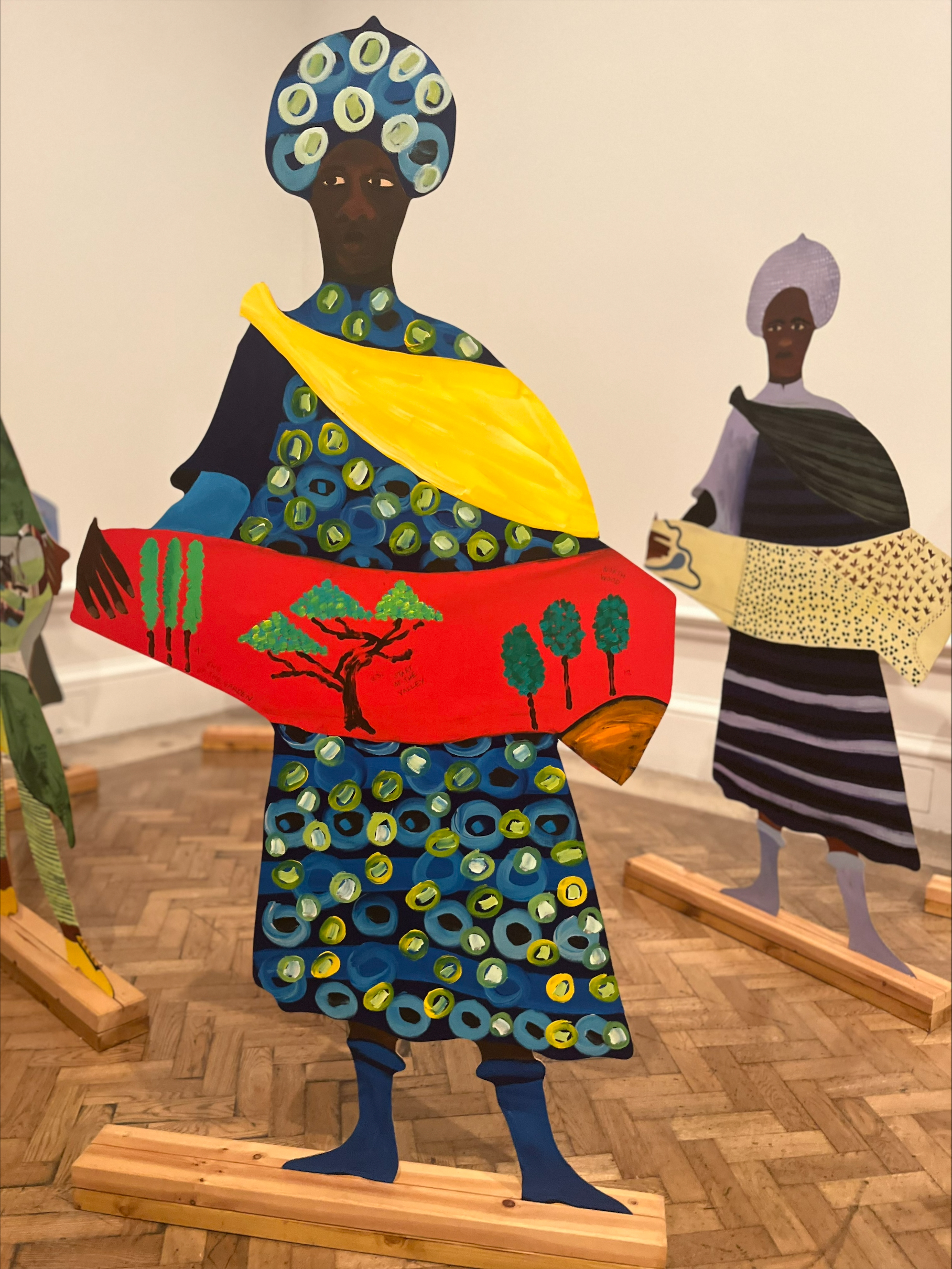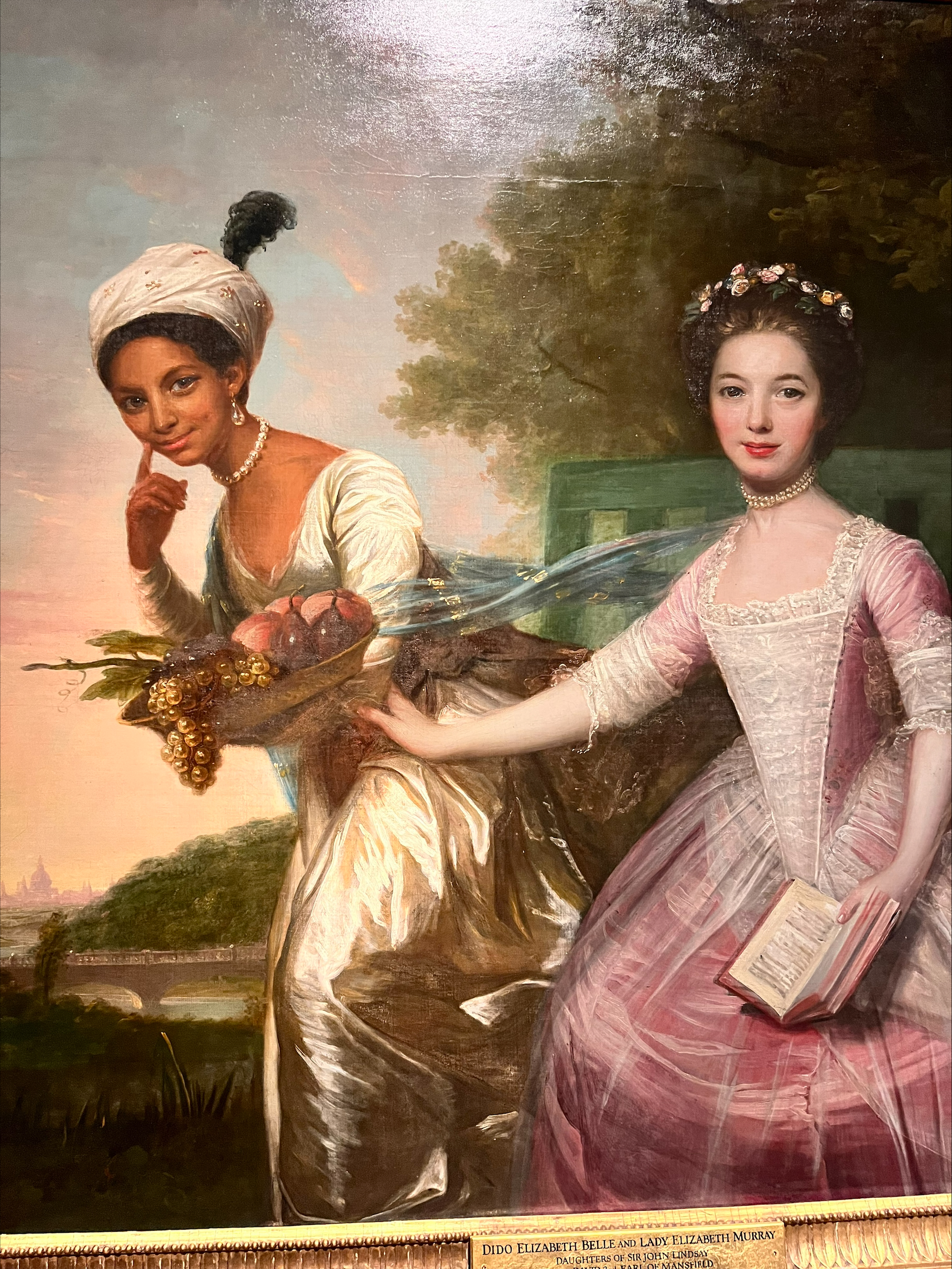Representatives from IofC UK recently visited the ‘Entangled Pasts’ exhibition at the Royal Academy in London. Among the attendees were Amanda Clements, Curriculum Developer and Dr Muna Ismail, Programme Manager for Refugees as Re-Builders (RRB) along with other members of the RRB community. Amanda Clements shares her reflections and experience of the exhibition below.
The Royal Academy (RA) was founded in 1768 at the height of Britain’s Atlantic trade in enslaved African people. British colonial expansion was on the rise. The RA was a place for leading artists of the day to create work that represented current events and the people involved. For over 250 years artists have expressed divergent relationships to imperial histories. ‘Entangled Pasts’ explored questions of power, representation and how art shapes narratives of empire, enslavement, resistance, abolition and colonialism. Works of art have always been agents of change, a lens through which complex situations can be viewed and nuanced understandings of them emerge.
Entangled Pasts brought together over 100 major contemporary and historical works creating a space for contemplation, inquiry, acknowledgement, reflection, imagination and ongoing conversations; setting a course for the future.
I felt the content and vision of the exhibition was of significant interest to RRB and close colleagues which is why I encouraged a visit. We were a group of six which included refugees. I had asked the RA if they had an access scheme for refugees and they generously responded by sponsoring two free tickets. I’m fortunate in that I have visited the RA on many occasions and found this to be a particularly important exhibition because it was an attempt by a leading institution to hold itself to account.
I was inspired by many of the pieces; the flotilla of model boats by Hew Locke and the life size cut outs by Lubaina Himid to name but a few. My favourite piece was a painting of Dido Belle and Lady Elizabeth Murray painted in 1779 by David Martin. Dido Belle was the illegitimate child of an enslaved woman and a Royal Navy officer. She lived alongside her second cousin, Lady Elizabeth Murray in the household (Kenwood House, London) of William Murray, 1st Earl of Mansfield. I love the image of the two young women together. It’s a playful composition and the fondness and connection between the women is evident from their close physical proximity. Both women look directly at the artist, no hint of shyness or deference.
After visiting the exhibition Muna spoke about how the exhibition reflected her experience of having an ‘in-between identity’. Not fully from once place or another. It was an unexpected surprise, she said, to find herself represented in this ‘grand place’.
Farid, is an RRB Trainer and a refugee told Amanda “My visit to the Entangled Pasts Exhibition at London’s Royal Academy was simply unforgettable. This exhibition showed literally how the art can be powerful. The art itself was expressing history and a long tragic narrative more than the wall texts. It was like a story that spanned over 250 years summarising the history of empire, enslavement, resistance, abolition, and colonialism. One lesson that I learned from this exhibition is that life is about change. It showed you that resistance and struggle can make a change. What makes this exhibition so unique is, in fact, the way the art is presented, beginning with the opening room to the last one. It was grading from an extremely dark atmosphere up to the most bright and colourful one by the end of the show, reflecting the positive change that happened over a period of 250 for African descent. So, everything was creative.”
It was an educational, thought-provoking and thoroughly absorbing afternoon. I wrote to the RA afterwards thanking them firstly for putting on such a profound and powerful show and secondly for responding so positively to my request around inclusion and access. Long make it continue.
The Entangled Pasts exhibition has now ended, but you can find out more here

'Armada' by Hew Locke

'Naming the Money', life size cutouts by Lubaina Himid

Portrait of Dido Belle and Lady Elizabeth Murray by David Martin